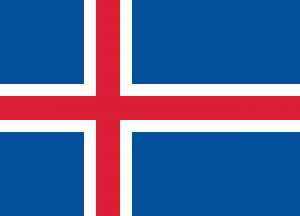Difference between revisions of "Language/Icelandic/Grammar/Verbs"
(Created page with "thumb <div style="font-size:300%"> Verbs in Icelandic</div> Verbs are conjugated for tense, mood, person, number, and voice....") |
m (Quick edit) |
||
| Line 37: | Line 37: | ||
Book: Learn to Speak Icelandic: without even trying, Stephen Hernandez'' | Book: Learn to Speak Icelandic: without even trying, Stephen Hernandez'' | ||
==Videos== | |||
===Icelandic Grammar: Impersonal Verbs - YouTube=== | |||
<youtube>https://www.youtube.com/watch?v=hy9vF22Cz_M</youtube> | |||
===Icelandic Verbs: Strong Verbs 1 - YouTube=== | |||
<youtube>https://www.youtube.com/watch?v=KzuAfRkfeVY</youtube> | |||
Revision as of 17:38, 22 February 2023
Verbs are conjugated for tense, mood, person, number, and voice.
There are three voices: active, passive and middle (or medial), but it may be debated whether the middle voice is a voice or simply an independent class of verbs of its own. Examples are koma ("come") vs. komast ("get there"), drepa ("kill") vs. drepast ("perish ignominiously") and taka ("take") vs. takast ("manage to"). In each of these examples, the meaning has been so altered, that one can hardly see them as the same verb in different voices.
There are four moods in Icelandic: indicative, imperative, conditional, and subjunctive.
Strictly speaking, there are only two simple tenses in Icelandic, simple present and simple past. All other tenses are formed using auxiliary constructions (some of these are regarded as tenses, others as aspects). For example, the present continuous is formed like this:
vera + að + infinitive verb
ég er að læra - I am learning (literal translation - I am to learn)
The collective tenses, formed with the use of auxiliary verbs, are: conditional, future, past (continuous, perfect, subjunctive), present (continuous, perfect, subjunctive).
The basic word order in Icelandic is subject – verb - object. However, as words are heavily inflected, the word order is fairly flexible and any combination may occur in poetry: SVO, SOV, VSO, VOS, OSV, and OVS are all allowed for metrical purposes.
However, as with most Germanic languages, Icelandic usually complies with the V2 word order restriction, so the conjugated verb in Icelandic usually appears as the second element in the clause, preceded by the word or phrase being emphasized.
Sources
Book: Learn to Speak Icelandic: without even trying, Stephen Hernandez
